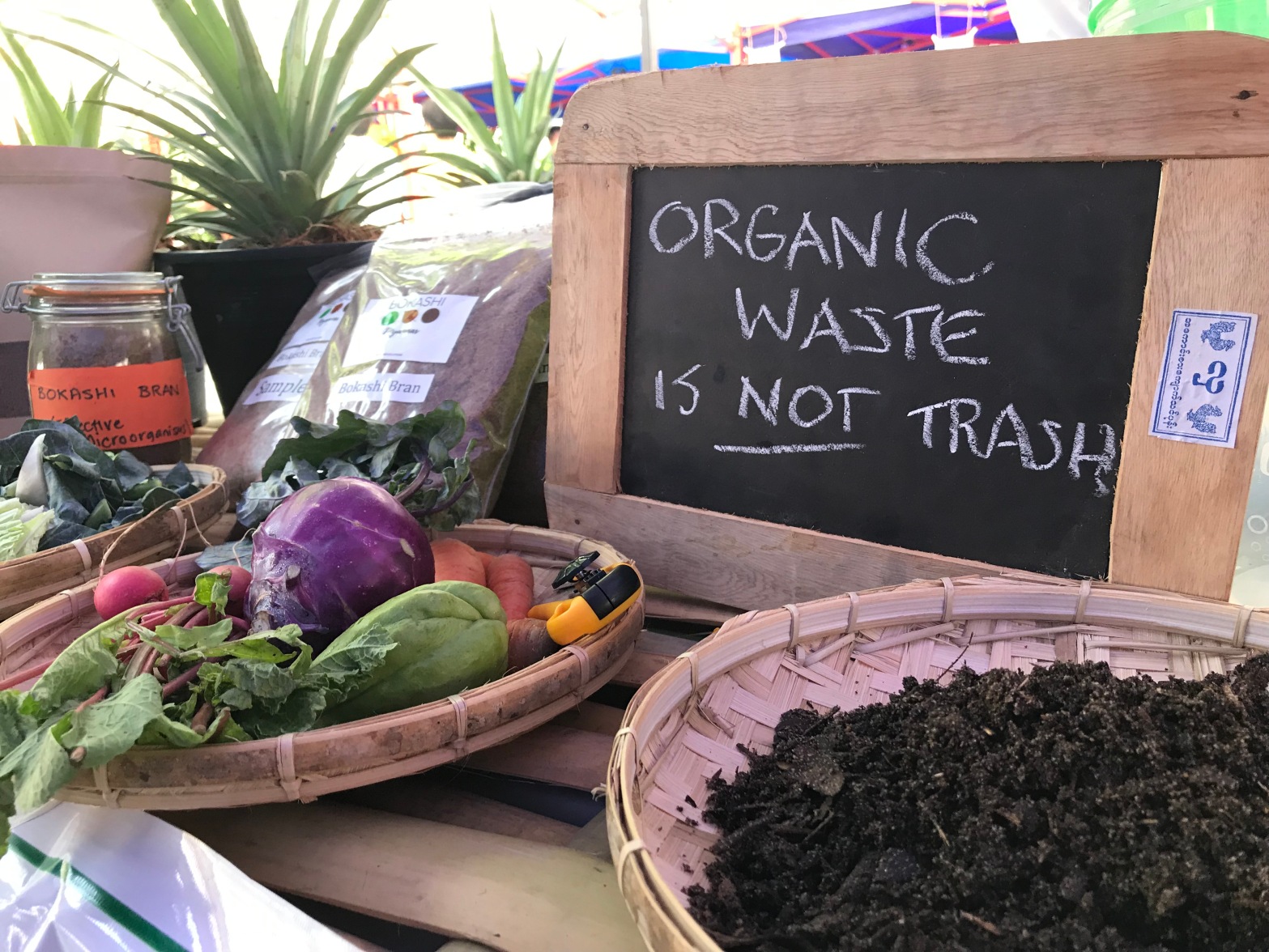The most common question — ever — is What is bokashi? So let’s start with this.
Bokashi is a new way of using kitchen food waste to make soil. Great soil. Healthy, living soil that’s full of microbes and nutrients.
It’s the fastest way of making soil that I know about it.
And even though I’ve been doing traditional composting for years before starting with bokashi, the results are far better. Plus, it’s a lot easier once you figure out how to do it.
So: faster, better, easier.
But there’s one more thing that’s more important than all this.
It’s about carbon gases. Greenhouse gases. The carbon-based stuff in the atmosphere we really can’t afford to have more of.
Traditional composting creates a lot of greenhouse gases. Bokashi doesn’t. So if we look at the really big picture, this is important.
A traditional compost works with decomposition. If you put a lot of organic material in a pile if will rot, decompose, and eventually become soil. So far so good.
But the problem is that this takes time, and a lot of the original nutrients and energy are lost in the process. And some 50 per cent of the carbon in the pile leaks out as carbon gases, methane and carbon dioxide. They make their way into the atmosphere and as a result add to the problem rather than to the solution. Meanwhile, the rest of the carbon in the pile becomes soil organic carbon, the good side of the equation, the thing we are really in need of.
But the pity is that half of the ”goodness” of the pile is lost for no reason.
When we would really need all of it in the soil and none of it in the air.
While it may not matter that you or your neighbour add a few extra kilos of methane to the atmosphere, it does matter if you look at organic waste and composting from a global perspective.
We really cannot afford to be losing so much good ”soil” energy for no reason.
And we absolutely cannot afford to be producing such staggering amounts of greenhouse gases as a result of poor management of organic waste.
So, even from this perspective, bokashi is the answer.
Faster, better, easier, yes. But also a very smart way of using unwanted organic material to create valuable soil carbon instead of very invaluable greenhouse gases.
Three-step process
As I said earlier, bokashi is a new way of making great soil from organic waste. Apart from all the environmental benefits, it’s quick and easy and universal: works pretty much anywhere.
Bokashi is a process. A three-step process that’s very simple and that you can do in any kitchen, small or big, in any country and under any living conditions.
It’s based on fermentation.
Which in turn, is based on microbiology: a whole bunch of so-called beneficial microbes do what they do best and restructure the components of organic material into other components. Then, in turn, they work with soil microbes to transform the new components into soil. Living, active soil, the best there is.
The first two steps of the three step process take place in the kitchen. The third takes place in the soil.
How does it work?
Step one: You need a bokashi bucket (more later) and some proper bokashi bran (more later on that too). And food waste: whatever you have going in the kitchen basically. It will all work.
The easiest method is to collect up the day’s food scraps in a container on the kitchen bench and add them once a day or so to the bokashi bucket. Sprinkle a tablespoon or two of bokashi bran into the bucket before you start then the same again after every liter or so of food waste.
It’s worth chopping up the food scraps a little as it will help the microbes get a grip and do their work. If you have big quantities of any one thing, try to alternate it with some other kind of scraps.
It really doesn’t matter how little or how much food waste you generate each day, a typical volume is around one liter and that means you’ll fill your bucket in 10 days or so. But every household is, of course, different. If you need to go away for a few days, it doesn’t matter. Just carry on when you come home again.
Keep filling the bucket till it’s full. Press down the contents as you fill the bucket, but not so hard that it prevents moisture from finding it’s way down to the tap, if you have one.
That’s it for step one!

One thought on “01. Get started with bokashi!”